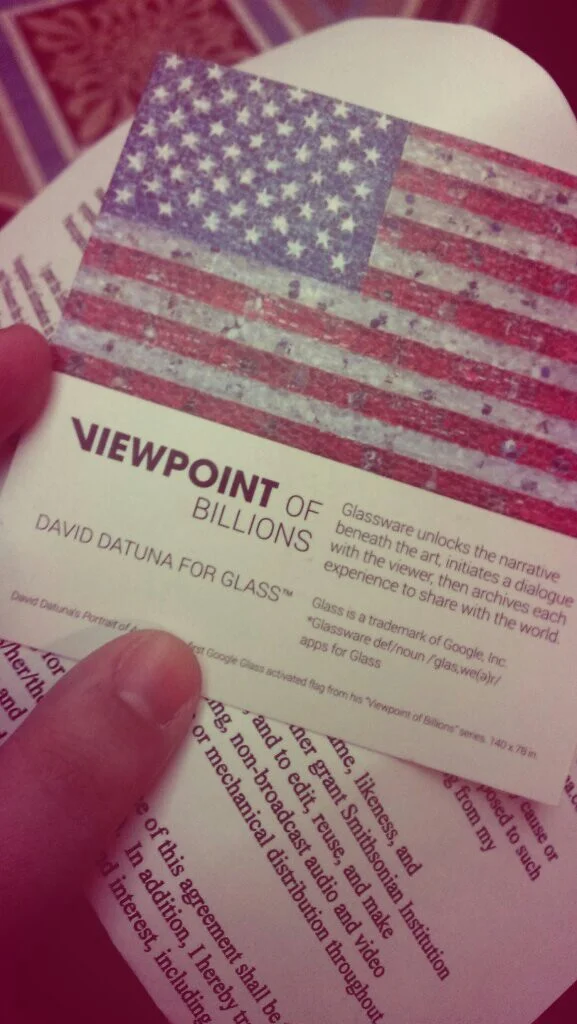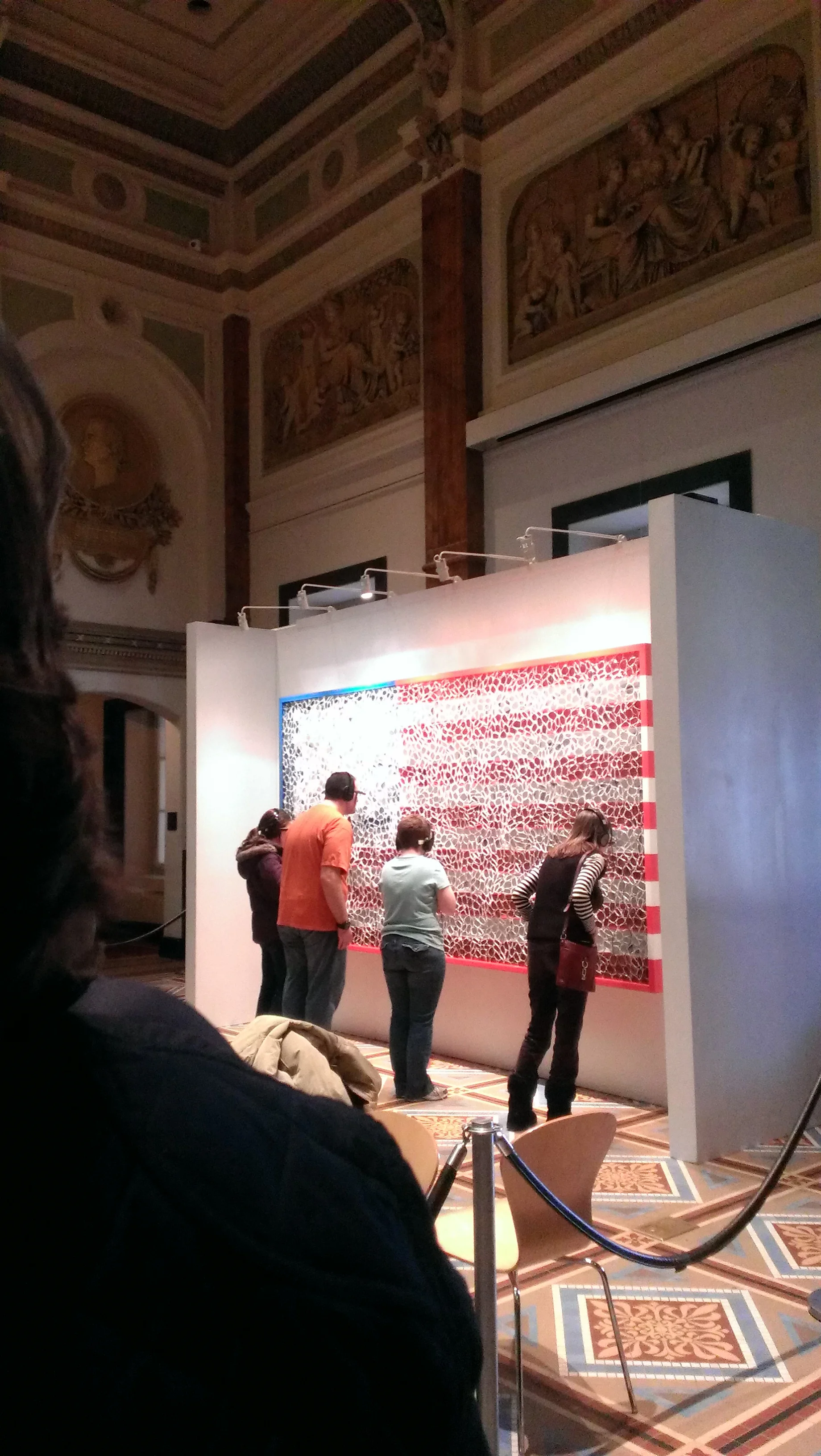Wearable technology is all anyone is interested in talking about these days, and certainly AMT Lab is no different (for example, see Performing Arts in the Wearable Age). I’d like to take a brief interlude from gossiping about when Apple’s smart watch is going to drop to refocus on an “older” wearable technology: Google Glass.
Let me preface this by saying I am not an Explorer (or a Glasshole–whichever floats your boat) but as a casual observer of technology, I’ll jump at the chance to try something new. Like Google Glass. So when the National Portrait Gallery offered me (and the rest of DC) the chance to do just that, you bet I went for it.
David Datuna’s “Viewpoint of Billions” is arguably the first of many works of art that will be inspired by wearable tech, but it sets a high bar. Last February, he and his team brought a few pairs of Google Glass to the National Portrait Gallery in Washington, DC, and invited visitors to truly experience the piece. At face value, “Viewpoint of Billions” is little more than a flag, covered in undulating, clear eyeglass lenses. Move a little closer and you can see images of pop culture icons and political figures hidden below the lenses. Look at the piece while wearing Google Glass, however, and it comes alive. When Glass recognizes a pop icon image in the flag, a short video plays (visible only to the Glass wearer). When Glass recognizes a camera hidden within the flag, the wearer sees a question projected in her Glass. That same camera then records her response, but if the wearer does not find one of these cameras, that particular experience is not triggered. Glass records the entire experience of each wearer separately using the camera built into Glass.
Physically, “Viewpoint of Billions” is massive with many different hidden triggers. So literally every person who looks at it has a different experience; even your height will change what you encounter. For example, I found an interview with Edward Snowden, an episode of Oprah’s talk show, and Beyonce concert clips.
"Viewpoint of Billions" by David Datuna
And that’s frankly what is the most genius thing about this piece. David Datuna is an immigrant to the U.S. and uses this piece to express his “complicated feelings about his adopted country.” This piece is different for each person, just as each of us has a difference experience in America (and different reactions to “Americana”). It might be the least kitsch piece of Americana art that exists.
Waiting in line at the National Portrait Gallery to see David Datuna's "Viewpoint of Billions"
Which perhaps explains the crowds—I waited in a line for about an hour before I was able to don Google Glass and some very large headphones. Previous experiences lacked the headphones, but I suspect that was due to the cavernous space the piece was in; they were necessary to hear the audio components of “Viewpoints.” One of Datuna’s aides turned on Glass and helped calibrate it for me. An app designed by BrickSimple did the rest. Of course, a Smithsonian employee was waiting after the experience to ask if I wanted my “portrait” taken with the piece, which was then posted with any video that the piece captured to the “Viewpoint of Billions” Tumblr.
“Viewpoint of Billions” is most interesting in consideration of how reticent art museums have been to welcoming technology into their spaces. Some art museums have a “no-camera” policy because they don’t want a screen coming between the viewer and the art (as opposed to copyright concerns). In that vein, Datuna’s piece is so very unique and specific to the viewer that it is limiting. Viewers experience the piece alone, even if others are there. It’s an intensely personal experience, but only if you have Google Glass.
The author's "portrait" wearing Google Glass
Even though the piece has traveled, exhibitions with Glass may not be coming to a museum near you. Datuna worked with Google to integrate this piece with Glass—a goal out of the reach of the average gallery or museum. In the interim, you can learn more about Datuna’s process for “Viewpoint of Billions” here.





